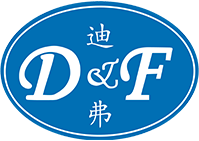Properties of insulating materials
Tiempo de liberación:
May 31,2023
Leakage current means that after a DC voltage is applied to both ends of the insulating material, a certain current will flow through the insulator. This current consists of three main components:
(1) Leakage current
Leakage current means that after a DC voltage is applied to both ends of the insulating material, a certain current will flow through the insulator. This current consists of three main components:
1) Instantaneous charging current: geometric capacitance charging current, decreases rapidly with time (charging is completed);
2) Absorbed current: generated by slow polarization, gradually decreasing with time (polarization is completed);
3) Leakage current: material resistance current, the change is very small.
The size of the leakage current reflects the insulation of the material, the smaller the value, the better the insulation.
(2) Surface resistivity and volume resistivity
In solid insulating materials, the leakage current is divided into two parts: surface current and volume current, and its resistivity is also divided into two parts:
Characterization of the insulation properties of the surface of the material, called surface resistivity, the symbol is s, the unit is;
Characterize the insulation properties inside the material, called volume resistivity, with the symbol ρv and the unit Ω · cm. The volume resistivity of the insulating material is generally greater than 109 Ω · cm.
(3) Insulation resistance
The ratio of DC voltage U and leakage current I applied to both ends of the insulating material is called insulation resistance R, and the unit is megohm (MΩ), as shown in the following formula.
R=U/I(2-10)
(4) Value of media loss angle tan δ
When an AC voltage U is applied to both ends of the insulating material, part of the charging current and the absorption current are reactive capacitor current, while the leakage current is mainly active current (resistance current), and the ratio of the two is:
tanδ = IR/IC× 100%(2-11)
Where, IR-resistance current;
/IC-reactive current;
tan δ-tangent of media loss,%.
Obviously, tan δ reflects the insulation of the material, and the smaller its value, the better the insulation.
(5) Breakdown strength
When applied to the insulating material at both ends of the AC electric field strength is higher than a certain critical value, the current surge, the insulation loses its insulating properties, this phenomenon is called breakdown, the critical electric field strength is called breakdown strength.
Palabras clave:
Hot News
The Ins and Outs of Busbars: Powering Our World
Discover the fascinating world of busbars, their functions, and applications in electrical systems.
Nov 05,2025
Understanding Busbars: The Backbone of Electrical Systems
Dive into the world of busbars, their significance, and how they power our electrical systems.
Oct 31,2025




